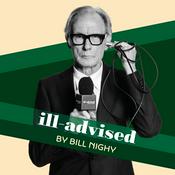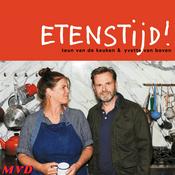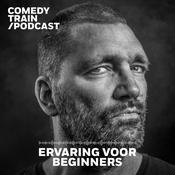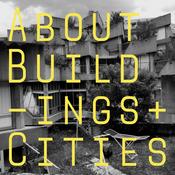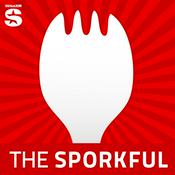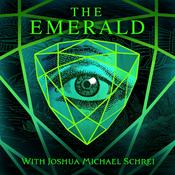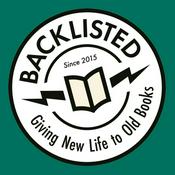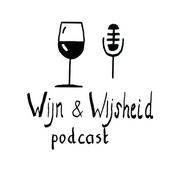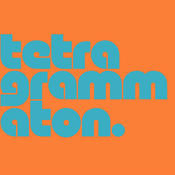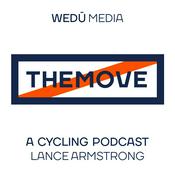Beschikbare afleveringen
5 van 238
- #224. The Truth About Writing Faster: It's Not What You ThinkUnlock the clarity you need to write smoothly, avoid constant restarts, and finish a stronger first draft in less time.If you've ever tried to draft quickly and ended up with pages that feel unsalvageable, this episode will help you understand why that happens and what to do instead. You'll learn what makes fast drafting possible, how clarity speeds up your process, and why a little prep work often saves months of rewriting. You'll also hear how my writing students used this approach to finish their drafts with a lot less overwhelm. This is what I talk about:[02:25] Why following common first-draft advice leads to writing that feels impossible to fix, and how this one shift saves months of frustration.[03:50] The deeper reason you feel slow and stuck while drafting, even when you're writing regularly, and why fixing it builds intentional forward momentum.[06:45] The story foundations most writers skip and how having them in place keeps you from second-guessing or rewriting the same chapters.[08:50] How a simple, flexible roadmap gives you clarity, confidence, and momentum so you stop wandering through your first draft and start moving forward.[09:25] What writing feels like when you’re no longer guessing and how this clarity helps you finish a stronger first draft.Fast and good don't have to compete. With the proper prep work, you can draft briskly and end up with a story that works from beginning to end.🔗 Links mentioned in this episode:Get on the Notes to Novel waitlist!Take The Author Success Blueprint Quiz 5 Writing Roadblocks Keeping You Stuck & How to Break Through⭐ Follow & ReviewIf you loved this episode, please take a moment to follow the show and leave a review on Apple Podcasts! Your review will help other writers find this podcast and get the insights they need to finish their books. Thanks for tuning in to The Fiction Writing Made Easy Podcast! See you next week!Ready to make 2026 the year you finally finish your novel? Notes to Novel is my signature program that walks you through brainstorming, outlining, and writing a first draft that works—so you always know what to do next. Click here to get on the waitlist →Support the show👉 Looking for a transcript? If you’re listening on Apple Podcasts or Spotify, scroll down below the episode player until you see the transcript.--------15:39
- #223. Permission to Start: How to Move Past ‘Not Ready Yet’ and Finish Your NovelDiscover why “I’m not ready yet” is a fear-driven mindset and learn how to take small, confident steps that move your novel forward.So many writers get trapped in the feeling that they need more time, more research, or more clarity before they can truly start their first draft. And on the surface, that sounds reasonable. But most of the time, “I’m not ready yet” is a sign that you're scared to make the wrong choice, afraid to write something imperfect, or petrified you won't live up to your idea.In today’s episode, I want to help you understand what's really underneath the “I’m not ready” feeling, how to recognize when planning has quietly turned into procrastination, and how small, low-pressure experiments can help you build momentum right now. My goal is to help you shift out of waiting mode and into action so your story can finally start taking shape.This is what I talk about:[02:30] The hidden fear driving “I'm not ready yet” and why it shows up for even the most motivated writers.[03:15] How research becomes a safety blanket, and the mindset shift that moves you from learner to creator.[04:45] The real reason clarity doesn’t arrive before you start writing and how drafting gives you the answers you’re looking for.[07:45] Simple “safe to fail” experiments that lower the stakes and help you build confidence on the page[09:35] How to tell whether you actually need more foundation work or you're using prep to avoid making decisions.You don't need to feel ready to start writing your novel. You just need permission to begin, and that confidence can come from you today. Tune in and take the very first step toward finishing your first draft.🔗 Links mentioned in this episode:Get on the Notes to Novel waitlist!Take The Author Success Blueprint Quiz 5 Writing Roadblocks Keeping You Stuck & How to Break Through⭐ Follow & ReviewIf you loved this episode, please take a moment to follow the show and leave a review on Apple Podcasts! Your review will help other writers find this podcast and get the insights they need to finish their books. Thanks for tuning in to The Fiction Writing Made Easy Podcast! See you next week!Ready to make 2026 the year you finally finish your novel? Notes to Novel is my signature program that walks you through brainstorming, outlining, and writing a first draft that works—so you always know what to do next. Click here to get on the waitlist →Support the show👉 Looking for a transcript? If you’re listening on Apple Podcasts or Spotify, scroll down below the episode player until you see the transcript.--------14:58
- #222. 3 Mindset Shifts Every Writer Needs to Finish Their NovelDiscover the mindset shifts to break out of analysis paralysis, choose progress over perfection, and build your novel layer by layer until it's complete.Feeling stuck writing your novel? You're not alone. Most writers think they're struggling because they don't have enough time, talent, or discipline. But more often than not, the real issue is actually mindset. In fact, it's the root cause of stuckness: rewriting the same chapters, second-guessing every decision, or trying to fix everything at once.In this episode, I’m sharing three mindset shifts that'll ease the pressure you're putting on yourself, help you get clarity on your draft, and write forward instead of sideways.You will hear me talk about things like:[03:15] Why getting stuck on the first few chapters is more about how you're thinking than how you're writing, and what to pay attention to instead.[06:45] How preparing, planning, and researching can quietly stall your first draft, and the moment you know it's time to switch into writing mode.[12:05] The reason drafting feels overwhelming when you try to fix everything at once, and the reframe that makes finishing your story feel doable.If you've been feeling pressure to get everything right before you can move forward, these shifts will help you see your draft in a much clearer and more manageable way. Your story doesn’t need perfection to grow; it's allowed to be messy while you figure things out.🔗 Links mentioned in this episode:Get on the Notes to Novel waitlist!Take The Author Success Blueprint Quiz 5 Writing Roadblocks Keeping You Stuck & How to Break Through⭐ Follow & ReviewIf you loved this episode, please take a moment to follow the show and leave a review on Apple Podcasts! Your review will help other writers find this podcast and get the insights they need to finish their books. Thanks for tuning in to The Fiction Writing Made Easy Podcast! See you next week!Ready to make 2026 the year you finally finish your novel? Notes to Novel is my signature program that walks you through brainstorming, outlining, and writing a first draft that works—so you always know what to do next. Click here to get on the waitlist →Support the show👉 Looking for a transcript? If you’re listening on Apple Podcasts or Spotify, scroll down below the episode player until you see the transcript.--------24:10
- #221. 5 Line Editing Tips to Make Your Prose ShineDiscover five practical line editing strategies that sharpen your prose, strengthen emotional clarity, and make each sentence more purposeful on the page.Line editing can feel intimidating, especially if you're not sure where to begin or how to make meaningful improvements at the sentence level. And if you've ever tried refining lines before your scenes are clear and working, you know how frustrating the process can be.In today’s episode, I’m joined by three brilliant book coaches and editors: Karyn Fischer, Alice Sudlow, and Julie Artz, who work with writers every day to help them strengthen their line-level craft. Along with their best tips, I’m also sharing two of my own favorite strategies so you can approach line editing without feeling overwhelmed or unsure of where to start.Here's what we talk about: [03:00] Learn how dynamic verbs instantly energize your prose and why swapping out static wording is one of the fastest line editing wins.[07:14] See how a simple clarity–flow–refinement order keeps your line edits focused and prevents the overwhelm that stops many writers in revision.[11:40] Learn why understanding the true purpose of your scenes helps you make clearer sentence-level decisions.[15:41] Explore how short, long, and mixed-length sentences shape pacing, emotion, and rhythm so your prose feels intentional instead of flat or repetitive.[19:28] Five practical line editing tools, from reading aloud to spotting junk words, that help you tighten and strengthen your manuscript.Whether you're revising a first draft or doing late-stage editing, these five tips will help you make intentional, powerful choices on every page.🔗 Links mentioned in this episode:Karyn Fischer WebsiteAlice Sudlow WebsiteJulie Artz Website⭐ Follow & ReviewIf you loved this episode, please take a moment to follow the show and leave a review on Apple Podcasts! Your review will help other writers find this podcast and get the insights they need to finish their books. Thanks for tuning in to The Fiction Writing Made Easy Podcast! See you next week!Ready to make 2026 the year you finally finish your novel? Notes to Novel is my signature program that walks you through brainstorming, outlining, and writing a first draft that works—so you always know what to do next. Click here to get on the waitlist →Support the show👉 Looking for a transcript? If you’re listening on Apple Podcasts or Spotify, scroll down below the episode player until you see the transcript.--------25:40
- #220. How to Build an Author Platform (Even if You're an Introvert) with Shelby LeighLearn how to build a focused, authentic author platform to connect with readers early, grow your visibility, and create lasting momentum for your book launch.In this episode, I’m joined by Shelby Leigh, bestselling author of four poetry books (with over 60,000 copies sold!) and the founder of Marketing by Shelby, where she's helped more than 8,000 authors and creatives learn how to market their books with ease.Shelby and I talk about how to start building your author platform before your book launches, what to post when you don't have a book out yet, and how to market in a way that fits your personality (even if you’re introverted or allergic to salesy marketing).Here’s what we cover:[02:15] How Shelby went from anonymous poet to book marketing educator, and what helped her embrace book promotion as an introvert who once dreaded it.[05:25] What an author platform actually includes (it’s more than social media!) and how early (or late) you should build one that works.[12:30] The 3-Part “Show, Sell, Story Tell” content framework for sharing your work online without feeling pushy or performative.[18:15] The most common author-platform mistakes writers make and the mindset shifts that turn confusing marketing into genuine reader connection.[20:40] How to set up your first email list, plan a low-stress book launch, and keep growing your readership long after release week.Whether you're preparing to publish or just starting your first draft, you'll discover simple, sustainable ways to market your book and connect with readers who'll love it.🔗 Links mentioned in this episode:Marketing By Shelby WebsiteGrab Shelby’s Free List Growth Starter Kit⭐ Follow & ReviewIf you loved this episode, please take a moment to follow the show and leave a review on Apple Podcasts! Your review will help other writers find this podcast and get the insights they need to finish their books. Thanks for tuning in to The Fiction Writing Made Easy Podcast! See you next week!Ready to make 2026 the year you finally finish your novel? Notes to Novel is my signature program that walks you through brainstorming, outlining, and writing a first draft that works—so you always know what to do next. Click here to get on the waitlist →Support the show👉 Looking for a transcript? If you’re listening on Apple Podcasts or Spotify, scroll down below the episode player until you see the transcript.--------32:45
Meer Kunst podcasts
Trending Kunst -podcasts
Over Fiction Writing Made Easy | Top Creative Writing Podcast for Fiction Writers & Writing Tips
Fiction Writing Made Easy is your go-to podcast for practical, no-fluff tips on how to write, edit, and publish a novel—from first draft to finished book. Hosted by developmental editor and book coach Savannah Gilbo, this show breaks down the fiction writing process into clear, actionable steps so you can finally make progress on your manuscript.Whether you're a first-time author or a seasoned writer looking to sharpen your skills, each episode offers insights on novel writing, story structure, character development, world-building, editing, and publishing. Savannah also shares mindset tips, writing routines, and revision strategies to help you stay motivated and finish your novel with confidence.If you're asking these questions, you're in the right place:How do I write a novel without experience?What’s the best way to structure a story that works?How do I develop strong characters and build immersive worlds?How do I edit or revise my first draft?When is my book ready to publish?What are my self-publishing and traditional publishing options?New episodes drop weekly to help you write a novel you're proud of—and get it into readers’ hands.
Podcast websiteLuister naar Fiction Writing Made Easy | Top Creative Writing Podcast for Fiction Writers & Writing Tips, ill-advised by Bill Nighy en vele andere podcasts van over de hele wereld met de radio.net-app
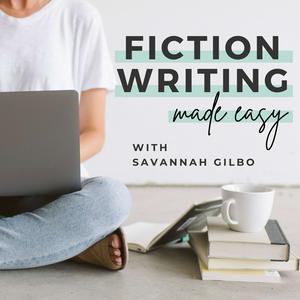
Ontvang de gratis radio.net app
- Zenders en podcasts om te bookmarken
- Streamen via Wi-Fi of Bluetooth
- Ondersteunt Carplay & Android Auto
- Veel andere app-functies
Ontvang de gratis radio.net app
- Zenders en podcasts om te bookmarken
- Streamen via Wi-Fi of Bluetooth
- Ondersteunt Carplay & Android Auto
- Veel andere app-functies


Fiction Writing Made Easy | Top Creative Writing Podcast for Fiction Writers & Writing Tips
Scan de code,
download de app,
luisteren.
download de app,
luisteren.
